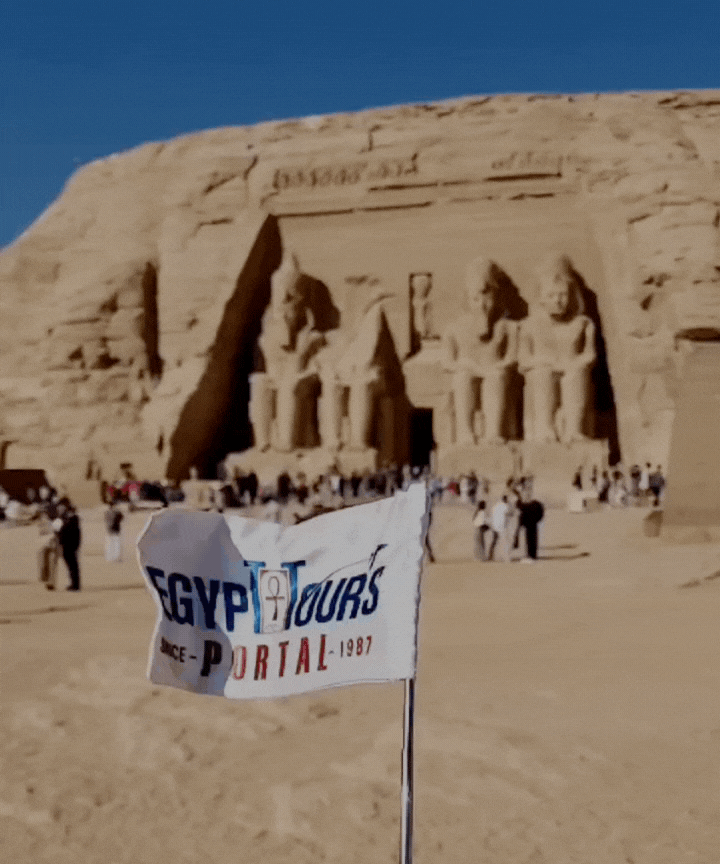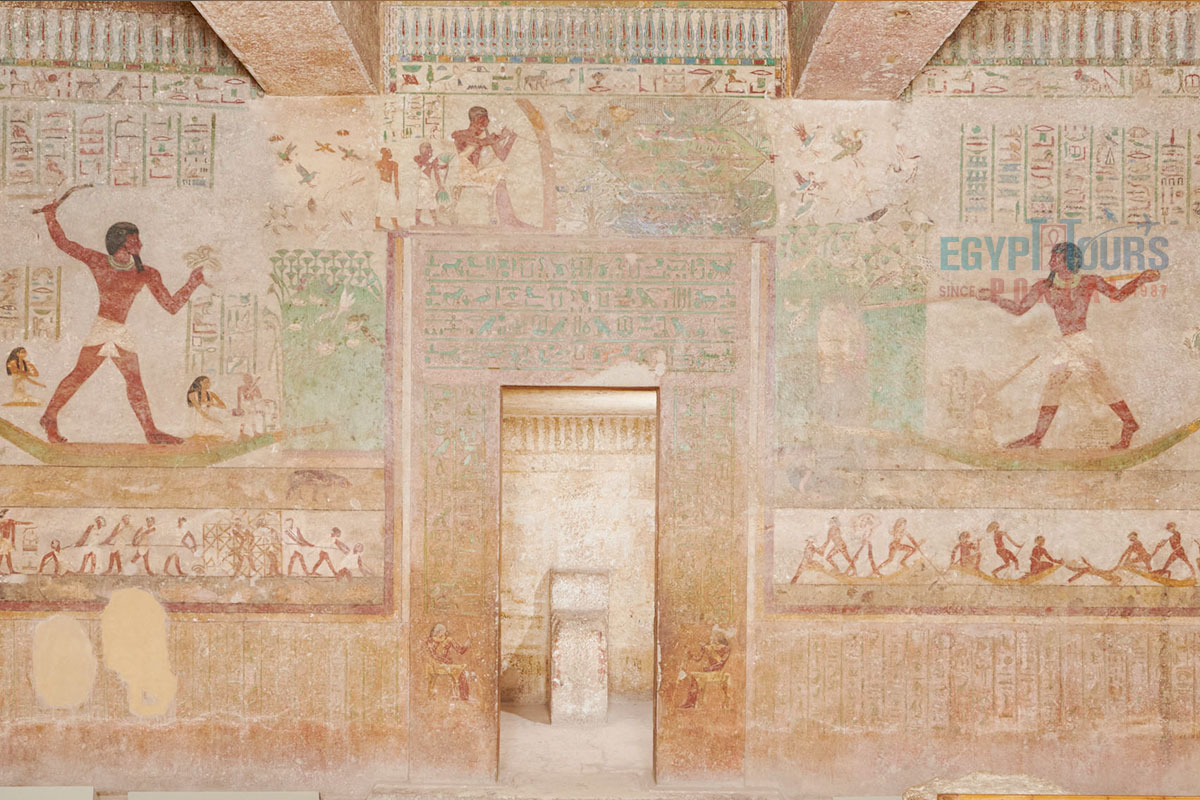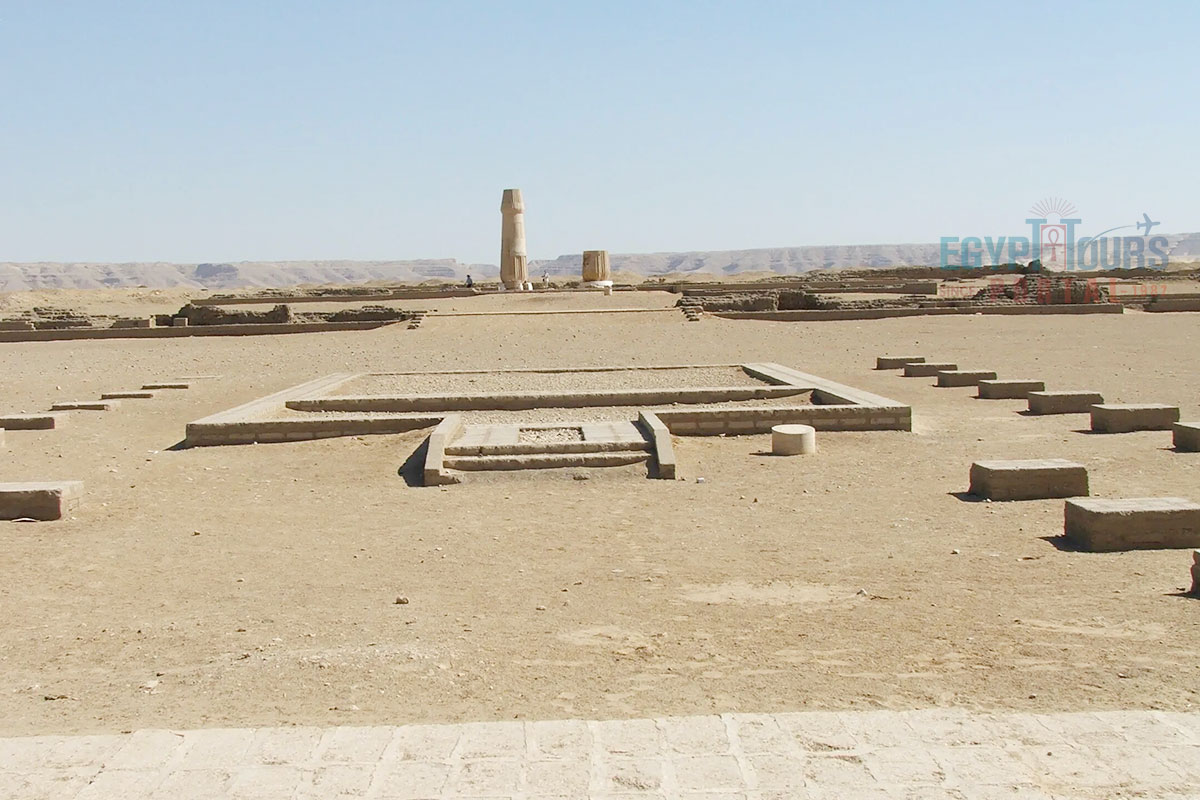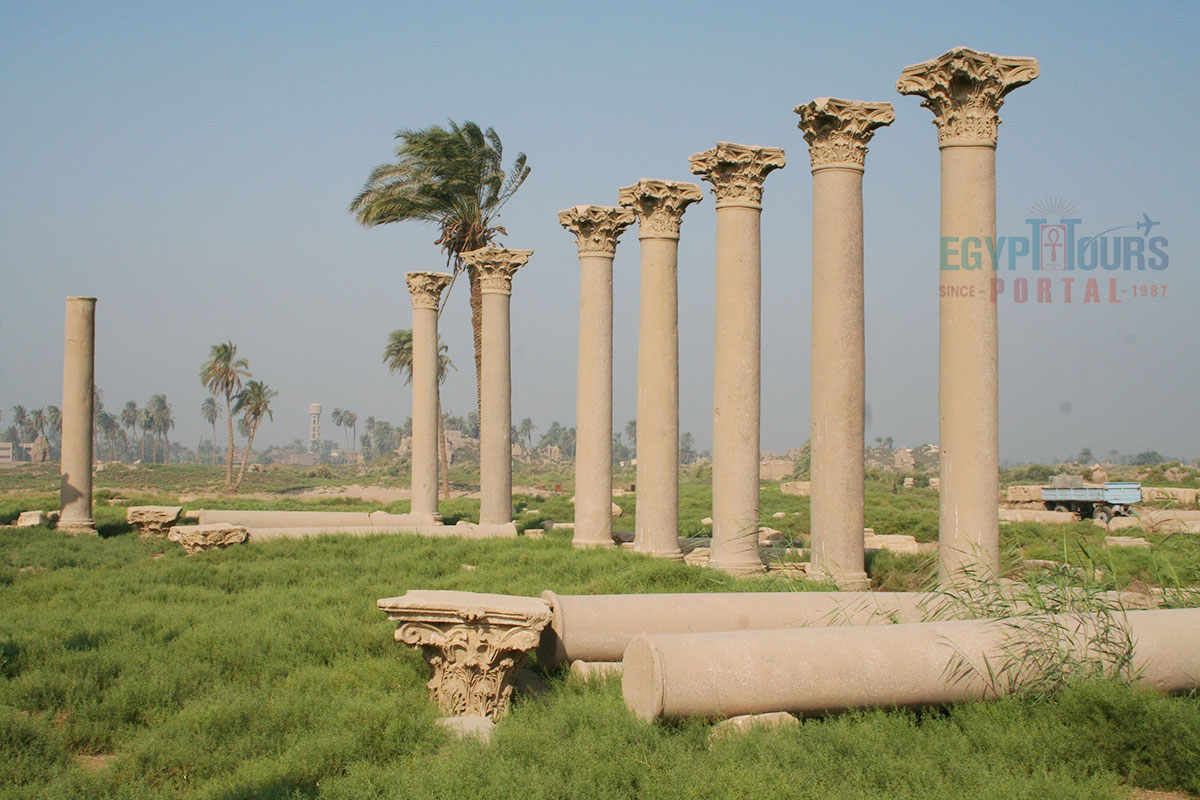Minya aka the Bride of Upper Egypt, is a timeless cultural crossroads connecting north and south Egypt. With a heritage spanning over 5,000 years, it showcases a stunning array of archaeological treasures—from the Pharaonic tombs of Beni Hassan and the Greco-Roman necropolis of Tuna el-Gebel to Hermopolis’ mythic ruins and Akhenaten’s visionary capital at Tell el-Amarna. Though lesser-known, Minya’s sacred temples, rock-cut tombs, and vibrant museums offer profound insight into Egypt’s spiritual and artistic evolution, making it a must-visit for history lovers and cultural explorers.


Minya Attractions come in all different shapes, sizes, and colors, revealing a great deal of facts about the history, archaeology, and artistic allure of the bride of Upper Egypt, “Minya”, which acted as a magical bridge between the south and north of Egypt for more than 5000 years. Through all the unique wonders and milestones found in Minya, everyone will come face to face with extraordinary cultural and artistic wonders that will reveal some of the most incredible facts about these ethereal gems.
All the attractions will come to life before your eyes, showcasing the blessings of this marvelous attraction of ancient Egypt art, dating back to significant times in the history of Egypt. With our magnificent Minya Tours, every world traveler and treasure seeker will get to uncover the glory, beauty, and wealth that surrounds all the golden milestones that have stood the test of time and radiate tales of extraordinary wonder.

Beni Hasan is a highly unique ancient Egyptian cemetery located about 20 kilometers south of modern-day Minya in Middle Egypt. Primarily used during the Old Kingdom but primarily during the Middle Kingdom (21st to 17th centuries BCE). These well-preserved tombs reflect the site's economic prosperity, which is divided into upper and lower cemeteries. The lower area contains about 800 shaft tombs, primarily belonging to officials from the First Intermediate Period to the Middle Kingdom.
The upper cemetery has 39 rock-cut tombs of provincial governors known as nomarchs from the Oryx nome, a region governed from Hebenu have intricate painted scenes depicting the daily life of the ancient Egyptians, including ancient Egyptian agriculture, ancient Egyptian craftsmen, hunting, games, war, ancient Egyptian clothing, and foreign interactions. These ancient Egyptian tombs were carved into limestone cliffs and contained outer courts, pillared rooms, and burial chambers.
The tombs are famous for their high-quality paintings depicting common daily life and warfare, although many of these scenes are now in poor condition. The site also features a subterranean temple called the Cave of Artemis, constructed by Hatshepsut and Thutmose III, dedicated to the local goddess Pakhet. Some of the most notable tombs there include: Tomb 2 of Amenemhat (Ameny), who served as a nomarch under Senusret I.
Tomb 3 of Khnumhotep II features depictions of Semitic traders' caravans. Tomb 4 of Khnumhotep IV held the position of nomarch during the late 12th Dynasty. Tomb 13 of Khnumhotep is a royal scribe from the 12th Dynasty. Tomb 14 of Khnumhotep I served as a nomarch under Amenemhat I. Tomb 15 of Baqet III is known for depictions of wrestling techniques. Tomb 17 of Khety is the son of Baqet, a nomarch during the 11th Dynasty, possibly depicting ball games. Tomb 21 of Nakht held the position of nomarch during the 12th Dynasty.
Tomb 23 of Netjernakht is the overseer of the Eastern Desert during the 12th Dynasty. Tomb 27 of Ramushenti is a nomarch from the 11th Dynasty. Tomb 29 of Baqet I is a nomarch from the 11th Dynasty. Tomb 33 of Baqet II is a nomarch from the 11th Dynasty.

The Mallawi Museum is found in Mallawi within the Minya Governorate of Upper Egypt. It was created in 1963 and serves as a repository for discoveries stemming from local archaeological excavations. It formerly housed a significant assemblage of ancient Egyptian artifacts of great value. This museum curates a diverse assortment of relics sourced from the adjacent archaeological sites of Tuna al-Gebel and Hermopolis.
Within its exhibits, visitors can encounter an array of intriguing artifacts, including numerous animal mummies and statues closely tied to the veneration of the deity Thoth. Around August 2013, the museum experienced a devastating looting incident that resulted in the theft or destruction of more than 1000 pieces from its collection. Despite this unfortunate event, approximately half of the pilfered items have been successfully recovered over time.

The Fraser Tombs are ancient rock-cut sepulchres located northeast of Al Minya, Upper Egypt, close to Tihna el-Gebel village. Dating back to the Fourth and Fifth Dynasties of the Old Kingdom, they form a 3 km long necropolis belonging to the town of Mer-nefer(et). These tombs, particularly the Tomb of Ny-ka-Ankh, unfold a fascinating history and a wealth of information about the ancient Egyptian civilization.
Surrounded by lush greenery, the serene Nile River, and an inviting atmosphere, these tombs are located approximately 8 kilometers northeast of Minya. The tombs were discovered in 1853 by Heinrich Brugsch and named after George Willoughby Fraser. The tombs were used by stewards of the royal estate, with some occupants being Hathor priests during the Fifth Dynasty.
Among the fifteen numbered tombs, four contain statues and hieroglyphics from the Old Kingdom period. The most significant tomb is possibly that of Ni-ankh-kay (Neka-Ankh), designed in the shape of a mastaba, featuring family statues and decorations in the offering room. To reach the Fraser Tombs, one can easily cross the Nile Bridge and head northward toward the village of Al-Shurafa. Continuing in an easterly direction, visitors will arrive at the village of Al-Hawarta, where the tombs are situated.

Tuna el-Gebel is known to be the main necropolis of Khmun (Hermopolis Magna). Spanning from the New Kingdom (1550 - 1070 BC) to the Roman Period ( 30 BC - 640 AD), it stands as the largest known Greco-Roman necropolis in Egypt, with particular significance during the Ptolemaic Period. The site contains a diverse range of artifacts and structures, spanning various periods. An ancient temple, possibly dedicated to Amenhotep III, Thoth, and local deities, dates back to earlier times.
During the Late Period, the necropolis was predominantly used for the burial of ancient Egyptian animals, especially ibises and baboons associated with Thoth worship. This was likely due to nearby animal breeding areas and religious practices. The Ptolemaic Period witnessed significant activity, marked by the construction of large tombs. Two brothers and priests of Thoth, named Petosiris and Djed-Thoth-iu-ef-ankh, built substantial tombs, reflecting their wealth and social status. Early Ptolemaic tombs were constructed with large stones, exhibiting reliefs and smooth surfaces.
Over time, smaller stones with rough surfaces and even mud brick tombs emerged. While most tombs were rectangular in shape, some featured stone or mud brick pillars that were too narrow to hold a body, possibly used for urns. The Roman Period introduced changes in burial practices. Tombs became more economical, featuring multiple stories to accommodate multiple individuals. Stone tombs were sometimes recycled or repurposed for secondary burials.
Throughout the Roman Period, the burial style in Tuna el-Gebel evolved from traditional Egyptian to more Greek-influenced practices. Greek-style mummification became increasingly popular, and mummies were often prominently displayed. Tuna el-Gebel's rich history encompasses a range of burial practices and styles of ancient Egyptian architecture, reflecting the diverse cultural and temporal influences that shaped this prominent necropolis.
Some of the most magnificent tombs include the Tomb of Petosiris and the Tomb and Chapel of Isadora. About 50 mummy collections, dating back to the Ptolemaic Kingdom, which were wrapped in linen with stone coffins and wooden sarcophagi, were discovered in 2019 by Egyptian archaeologists in the same area.
Discover all the magnificent mummies of the ancient Egyptian civilization
Read More
Tell el-Amarna was destined for greatness as a symbol of a religious revolution that failed completely, and only the ruins and tombs of the city of Akhetaton ("Horizon of the Aton") in Upper Egypt are what remains, which is found about 44 miles north of modern Asyūṭ. Built by Akhenaten (Amenhotep IV) in approximately 1348 BCE as his new capital, which focused on the worship of the Aton sun deity, and was abandoned around 1332 BCE, a few years after Akhenaten's death.
Despite its brief existence, Akhetaton has been extensively excavated, providing a clear layout of the city. The major buildings were aligned along the Royal Road. Notably, the Great Temple of the Aton, marked by walled courts leading to an open-air sanctuary, stood prominently. Adjacent were the royal palace and family residences. Dwellings were made of baked mud brick, adorned with naturalistic painted art, often depicting Akhenaten and his family.
Key finds included portraits of Queen Nefertiti, cuneiform tablets detailing foreign affairs, and tomb paintings that revealed aspects of daily life and ancient Egyptian religion. The officials' tombs resembled those in Thebes, while the workers' row houses were simpler. The tomb of Akhenaten and his family, featuring scenes of mourning, held broken artifacts from the ruler's interment. After abandonment, Akhetaton's temples were dismantled for new projects, with Ramses II reusing stone blocks from the Aton temples in his constructions at nearby Hermopolis.

Hermopolis is one of the oldest cities in the history of Egypt, which is situated at the boundary between Lower and Upper Egypt. It has great value in the realm of ancient Egyptian mythology as it has strong ties and effect on the religion and culture of Egypt across many ages. It was a provincial capital from the Old Kingdom to Roman Egypt and later a center of early Christianity. Abandoned after the Muslim conquest, it became a Latin Catholic and Coptic Orthodox titular see.
Its remains are near modern el Ashmunein in Egypt. It had many names, as it was known as "Eight-Town" (Khemenu) after the Ogdoad deities. The city was called "The City of Hermes" in Greek due to its main cult center of Thoth, associated with Hermes. Hermopolis was the capital of the Hare nome in ancient Egypt, located on the border of Upper and Lower Egypt. It held a prominent position as a border town, boasting wealth and importance second only to Thebes. The city had a castle and was a toll collection point for river traffic from the Thebaid.
The city's necropolis was across the Nile, and due to the river's presence, it was more practical to ferry the deceased across the water for burial. It is renowned for being the palace that held the emerald book of Thoth and the place which witnessed its creation myth that was connected with the Ogdoad. In Roman times, Hermopolis gained significance in the province of Thebais Prima, and the city's main deities were Typhon (Set) and Thoth.
Typhon was represented by a hippopotamus with a hawk fighting a serpent and an ibis, who was the animal form of Thoth. A surviving papyrus shows seven-story buildings in the town, and its architecture faced changes under Muslim rule. The temple featured an impressive portico with painted columns. A basilica from the 5th century stands nearby. An open-air museum now holds Thoth statues and carved blocks.
Explore all the history and powers of the gods and goddesses of the ancient Egyptian civilization
Read MoreMinya is blessed with gigantic historical and archaeological wonders, offering visitors a unique opportunity to explore the rich tapestry of ancient Egyptian history through our 2-day Minya tour from Cairo and Trips to El Amarna and Beni Hassan. Everyone will travel from the rock-cut tombs of Beni Hassan to the remnants of the Amarna period at Tell el-Amarna, and each attraction will contribute to a deeper understanding of Egypt's past.
The region's museums, such as the Malawy Museum, will shed light on invaluable artifacts that bridge the gap between the distant past and the present. Whether exploring the Fraser Tombs, the catacombs of Tuna el-Gebel, or the religious significance of Hermopolis, Minya's attractions provide a fascinating journey into the heart of Egypt's ancient golden heritage. Our travelers from all over the world will come to explore the magical marvels of this complete travel destination with our amazing Egypt vacations and marvelous Nile cruises.
Private 4 Days Cairo Tour Packages for Indian Travelers 4 days Cairo Egypt Tour pack...
Tour Location: Cairo – Giza...
5 Days Cairo and Alexandria Tour Package For Indian Travelers 5 days Cairo and Alexa...
Tour Location: Cairo/Giza/Alexandria...
6 Days Cairo, Luxor & Aswan Tour Package For Indian Travelers 6 days Cairo, Luxo...
Tour Location: Cairo/Giza/Aswan/Luxor...
Amazing 7 Days Cairo and Hurghada Holiday for Indian Travelers 7 Days Cairo & Hu...
Tour Location: Cairo – Giza – Hurgh...
The entire country of Egypt deserve to be explored with its every heavenly detail but there are places that must be seen before any other such as the breathtaking Hurghada's red sea, The wonders of Cairo the pyramids of Giza, the great sphinx, the Egyptian Museum, Khan El Khalili Bazaar, the wonders of Luxor like Valley of the Kings, Karnak & Hatshepsut temple and the wonders of Aswan such as Abu Simbel temples, Philea temple, Unfinished obelisk and The Wonders of Alexandria like Qaitbat Citadel, Pompey's Pillar and Alexandria Library. Read more about the best places to visit in Egypt.
If you want to apply for a Visa On Arrival that lasts for 30 days then you should be one of the eligible countries, have a valid passport with at least 6 months remaining and pay 25$ USD in cash, as for the E-Visa for 30 day you should have a valid passport for at least 8 months, complete the online application, pay the e-visa fee then print the e-visa to later be presented to the airport border guard. You could also be one of the lucky ones who can obtain a free visa for 90 days. Read more about Egypt travel visa.
Egypt has a variety of delicious cuisines but we recommend “Ful & Ta’meya (Fava Beans and Falafel)”, Mulukhiya, “Koshary”, a traditional Egyptian pasta dish, and Kebab & Kofta, the Egyptian traditional meat dish.
The best time to travel to Egypt is during the winter from September to April as the climate becomes a little tropical accompanied by a magical atmosphere of warm weather with a winter breeze. You will be notified in the week of your trip if the Climate is unsafe and if any changes have been made.
You should pack everything you could ever need in a small bag so you could move easily between your destinations.
We have been creating the finest vacations for more than 20 years around the most majestic destinations in Egypt. Our staff consists of the best operators, guides and drivers who dedicate all of their time & effort to make you have the perfect vacation. All of our tours are customized by Travel, Financial & Time consultants to fit your every possible need during your vacation. It doesn't go without saying that your safety and comfort are our main priority and all of our resources will be directed to provide the finest atmosphere until you return home.
You will feel safe in Egypt as the current atmosphere of the country is quite peaceful after the government took powerful measures like restructuring the entire tourist police to include all the important and tourist attractions in Egypt. Read more about is it safe to travel to Egypt.
Wear whatever feels right and comfortable. It is advised to wear something light and comfortable footwear like a closed-toe shoe to sustain the terrain of Egypt. Put on sun block during your time in Egypt in the summer to protect yourself from the sun.
The best activity is by far boarding a Nile Cruise between Luxor and Aswan or Vise Versa. Witness the beauty of Egypt from a hot balloon or a plane and try all the delicious Egyptian cuisines and drinks plus shopping in old Cairo. Explore the allure and wonders of the red sea in the magical city resorts of Egypt like Hurghada and many more by diving and snorkeling in the marine life or Hurghada. Behold the mesmerizing western desert by a safari trip under the heavenly Egyptian skies.
There are a lot of public holidays in Egypt too many to count either religious or nation, the most important festivals are the holy month of Ramadan which ends with Eid Al Fitr, Christmas and new years eve. Read more about festivals & publich holidays in Egypt.
Egypt is considered to be one of the most liberal Islamic countries but it has become a little bit conservative in the last couple of decades so it is advised to avoid showing your chest, shoulders or legs below the knees.
Arabic is the official language and Most Egyptians, who live in the cities, speak or understand English or at least some English words or phrases. Fewer Egyptians can speak French, Italian, Spanish, and German. Professional tour guides, who work in the tourism sector, are equipped to handle visitors who cannot speak Arabic and they will speak enough English and other languages to fulfill the needs of all our clients.
The fastest way is a car, of course, a taxi. If you are in Cairo ride a white taxi to move faster or you could board the fastest way of transportation in Egypt metro if the roads are in rush hour.
The temperature in Egypt ranges from 37c to 14 c. Summer in Egypt is somehow hot but sometimes it becomes cold at night and winter is cool and mild. The average of low temperatures vary from 9.5 °C in the wintertime to 23 °C in the summertime and the average high temperatures vary from 17 °C in the wintertime to 32 °C in the summertime. The temperature is moderate all along the coasts.
It is the home of everything a traveler might be looking for from amazing historical sites dating to more than 4000 years to enchanting city resorts & beaches. You will live the vacation you deserve as Egypt has everything you could possibly imagine.









